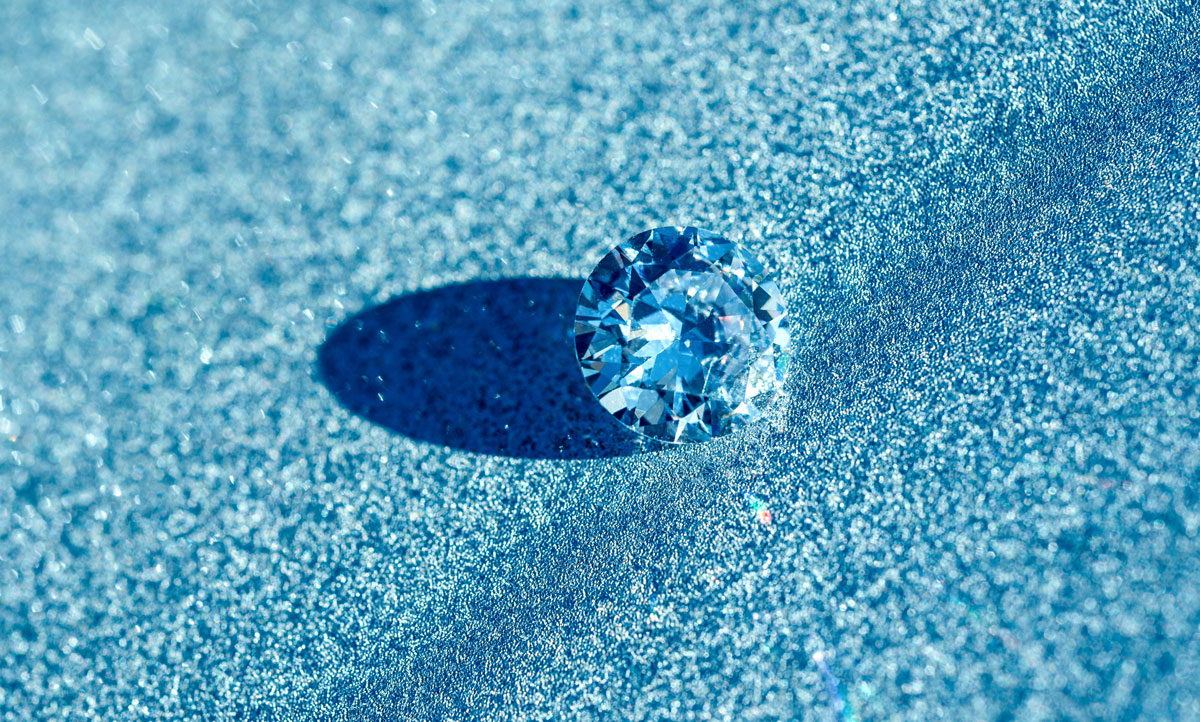Ever wondered what gives a diamond its sparkle?
Or why two diamonds of the same size sometimes appear different? The answer is in the cut, which is not to be confused with a diamond’s shape.
In this detailed guide, we’ll break down the essentials of diamond cut, explaining both the art and science behind it.
We’ll explore the difference between a well-cut diamond that sparkles and a poorly cut one that looks dull.
You’ll gain insights into the anatomy of a cut, the grading scale, and practical tips on selecting the right cut for your jewellery.
Introduction to Diamond Cut
When purchasing a diamond, whether for an engagement ring or another special piece of jewellery, diamond cut is one of the most critical factors to consider.
Usually regarded as the most important of the diamond 4Cs (cut, clarity, colour, and carat) in determining a diamond’s overall quality and visual appeal, the cut of a diamond refers to how well the diamond has been shaped and polished into its final form. It’s not about the shape of the diamond (such as round, oval, or square), but rather the precision, symmetry, and polish of its facets.
The cut is a complex and skilled process that transforms a rough diamond into a sparkling gem. Understanding diamond cut is essential for anyone looking to purchase a diamond, as it plays a vital role in determining the diamond’s overall appearance and value.
Why Diamond Cut Matters
- Brilliance: The cut determines how well the diamond reflects light. A well-cut diamond will sparkle brilliantly, while a poorly cut diamond may appear dull or lifeless. The angles and arrangement of the facets are key to this brilliance.
- Value: The cut grade can significantly impact the value of a diamond. A high-quality cut can increase both the beauty and the price of the diamond, while a poor cut can reduce both.
- Engagement Ring Selection: For engagement rings, the cut is often the top consideration. It’s what gives the diamond its sparkle and scintillation.
To illustrate the difference between a poorly cut diamond and one with a good cut, let’s compare two diamonds from Blue Nile. They have the same characteristics – 1 carat weight, VS2 clarity, and G colour.
The first diamond has a Good cut:
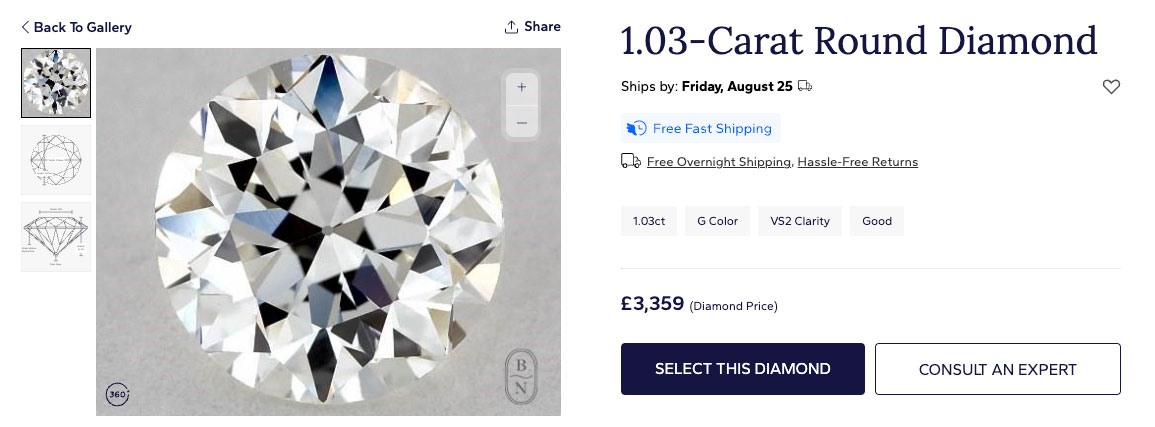
While the second diamond has an Excellent (Ideal) cut:
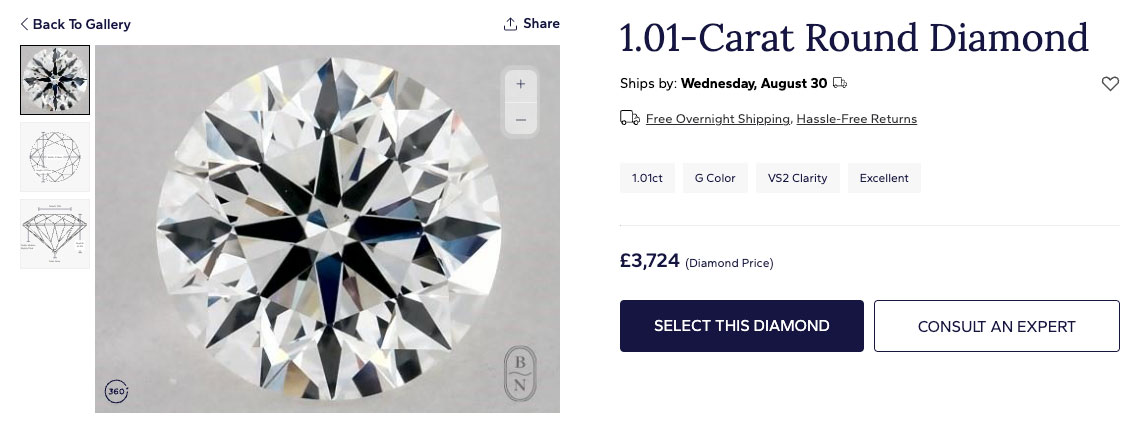
From these images, you should be able to see that the diamond with the Excellent cut has much more symmetry, with clearly-defined ‘arrows’ viewable from the top. What can’t be seen so easily in images it that the excellent cut will demonstrate significantly brilliance than the diamond with a Good cut, which is best seen in person.
Understanding these differences can help you make an informed decision when selecting a diamond.
The Impact of Cut on Diamond Sparkle
The important thing to understand with diamonds is that what makes them sparkle is the light reflecting back from them to your eye.
Different diamond shapes can reflect light in slightly different ways, but for most diamond cuts, the light enters the top of the diamond, bounces off the bottom facets and then back up to your eye.

If the shape of the diamond isn’t just right, light will be reflected at the wrong angle, won’t be reflected back to your eye and the diamond won’t sparkle. This is known as ‘light leakage’.
If a diamond is too shallow, the light will just travel straight through and be lost out the bottom, meaning it doesn’t sparkle.
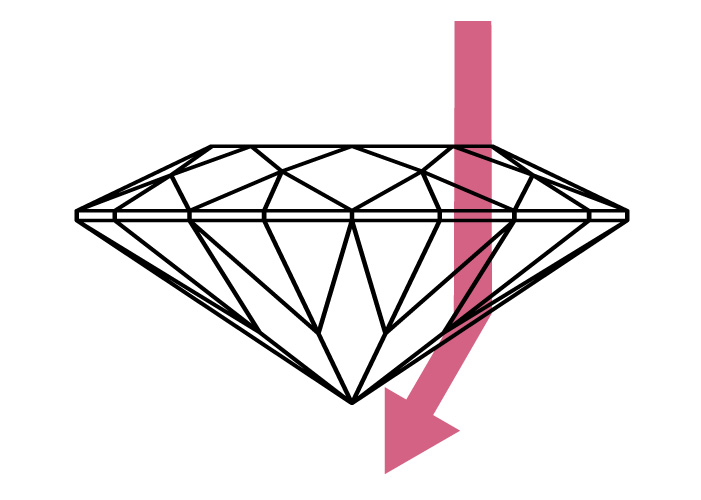
If a diamond is too deep, the light will bounce off the bottom facets at the wrong angles and be lost of the bottom:
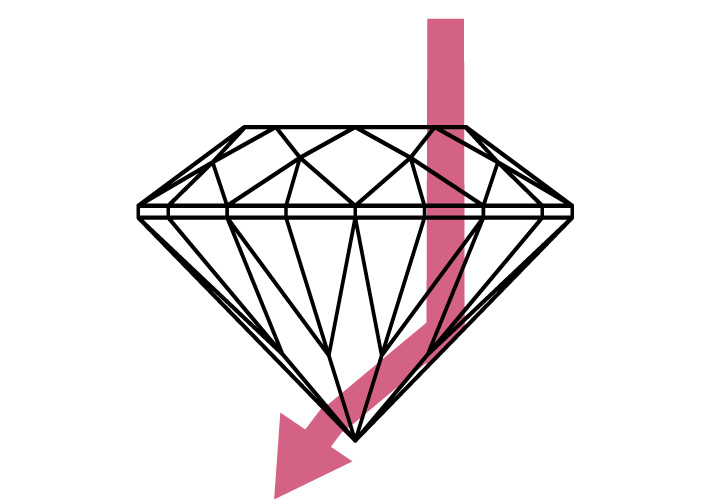
The Types of Light Reflection in a Diamond
There are actually three different ways that sparkle is judge in a diamond:
- Brilliance: This refers to the white light reflected from the diamond. It’s the brightness that gives a diamond its radiant glow. The cut quality directly impacts the level of brilliance.
- Fire: Fire is the dispersion of light into the colours of the spectrum. It’s the flashes of colour you see in a well-cut diamond. The angles and proportions of the cut influence this effect.
- Scintillation: Scintillation is the play of light and dark areas within the diamond as it moves. In other words, it’s the sparkle of a diamond. The alignment and symmetry of the facets contribute to scintillation.
Shaping the diamond to reflect light correctly and generate brilliance, fire and scintillation is very difficult and requires skilled craftsmen, which is why well-cut (and therefore more brilliant diamonds) are more expensive.
Diamond Cut vs Diamond Shape
Diamond cut and diamond shape are often used interchangeably, but they refer to different aspects of the diamond. Understanding the distinction between them is essential for anyone looking to purchase a diamond, as both factors play a significant role in the stone’s appearance, brilliance, and value.
Diamond cut: The cut of a diamond is all about craftsmanship. It’s the way the facets are carved and arranged, affecting how the diamond catches and reflects light. The cut is a measure of quality, focusing on proportions, symmetry, and polish.
Diamond Shape: The shape, on the other hand, is the physical outline or silhouette of the diamond. Whether it’s a classic round or a trendy pear, the diamond shape is about personal preference and style. It doesn’t reflect the quality of the cut but adds character and uniqueness to the stone.
How Diamond Shape Can Impact the Perceived Brilliance and Value of the Diamond
The shape of a diamond is more than just a visual preference; it plays a significant role in how the diamond appears to the eye. Different shapes emphasize various characteristics, influencing both brilliance and value.
Brilliance: Some shapes, like the round, are designed to maximise brilliance, reflecting light in a way that creates a dazzling sparkle. Others, like the emerald shape, may focus more on clarity, offering a different kind of beauty.
Value: The demand for certain shapes can affect their market price. Classic shapes like round might command higher prices due to their popularity, while more unique shapes might offer a distinctive look at a potentially lower cost.
Size Perception: Shapes like the oval or marquise can make a diamond appear larger than its actual carat weight, adding to its perceived value.
We have a separate article on diamond shape which explores these concepts in more detail.
The Anatomy of a Diamond Cut
This isn’t everything that is involved in contributing to a diamond’s cut quality, but it is some of the major factors that affect how much light a diamond will reflect and therefore how much it will sparkle:

Table
The table is the flat surface at the top of a cut diamond, acting as the gateway for light to enter and exit. It’s the largest facet, and its size and angle are vital in how the diamond reflects light.
A well-proportioned table allows just the right amount of light to enter and bounce back as sparkle.
Girdle
The girdle is the narrow band around the widest part of the diamond, a defining boundary that separates the crown (top-half of the diamond) from the pavilion (bottom-half).
The thickness of the girdle needs to be just right; too thin, and the diamond becomes prone to chipping, too thick, and it can reduce brilliance by absorbing light and actually make the diamond look smaller.
Crown
Above the girdle, the crown is the facets that slope upwards towards the table. These facets are like prisms, breaking white light into the rainbow colours of the light spectrum and contributing to the diamond’s ‘fire’ (coloured sparkle).
The angles and quality of the crown facets are crucial; they need to be cut with precision to maximise this colourful effect without dispersing light too much so that it is lost.
Pavilion
The pavilion is the lower portion of the diamond, below the girdle. Its facets slope downwards towards the culet, and their angles are vital for reflecting light back up through the crown.
As with everything else, the pavilion’s angles need to cut to precise angles; otherwise, light can leak out, reducing the diamond’s sparkle. In a well-cut diamond, the pavilion acts as a reflective bowl, bouncing light back to the eye and creating the diamond’s characteristic brilliance.
Culet
The culet is the tiny facet at the bottom of the pavilion. It can sometimes appear as a point, but its size is significant.
A large culet can allow light to escape, reducing the diamond’s brilliance, while a small or non-existent culet helps to reflect light within the diamond, increasing sparkle.
Grading Scale of Diamond Cut
The cut grade is a vital factor in determining both the brilliance and the value of a diamond.
It’s a measure of how well a diamond has been cut and shaped, particularly in the context of round brilliant diamonds, which are the most popular shape. The grading scale ranges from Excellent to Poor, and each grade has specific characteristics that define it.

We’ll examine each of the traits of the different diamond cut grades below.
Excellent Grade
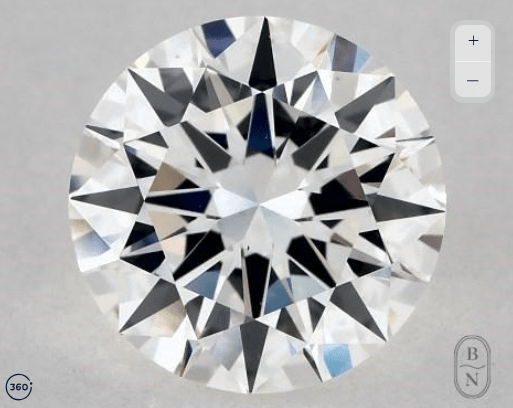
- Characteristics: Perfect symmetry, optimal proportions, and outstanding polish.
- Criteria: All facets are well-aligned, and the angles are precisely cut to maximise brilliance and fire.
- Impact on Value: Excellent or Ideal cut diamonds are highly sought after and command premium prices.
Very Good Grade

- Characteristics: Slightly less precise symmetry and proportions but still a high level of brilliance.
- Criteria: Minor deviations in facet alignment or angles, but these are often not noticeable to the untrained eye.
- Impact on Value: Offers great value as the visual difference from Excellent grade is often minimal.
Good Grade
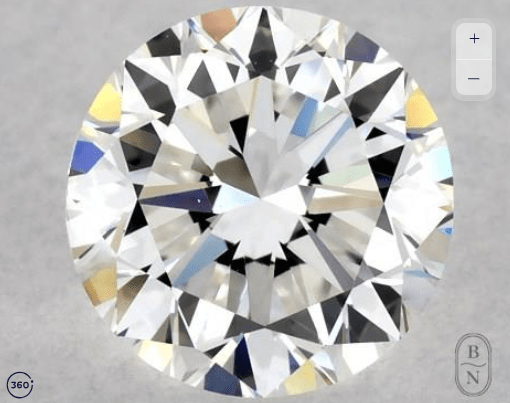
- Characteristics: Noticeable imperfections in symmetry or proportions but still a beautiful appearance.
- Criteria: A diamond with a Good cut grade has significant deviations in angles or alignment, which may slightly reduce brilliance.
- Impact on Value: Often more affordable, providing a balance between quality and cost.
Fair and Poor Grades
- Characteristics: Visible flaws in symmetry, proportions, and polish.
- Criteria: Considerable deviations in facet alignment and angles, leading to a loss of brilliance and fire.
- Impact on Value: These grades are less desirable and typically much lower in price.
As you can see, the cut grade is not just a technical assessment; it’s a reflection of the diamond’s beauty and value.
A high cut grade means the diamond’s facets work together to maximse light reflection and sparkle.
While an ‘excellent’ or ‘ideal’ cut diamond may be priced higher, we’d argue that they offer more value for month as they are delivering on the promise of a diamond.
Different Types of Diamond Cuts
Diamonds can be cut into various shapes and styles, each with its unique characteristics and appeal.
The type of cut not only influences the diamond’s appearance but also its brilliance and value.
Let’s delve into the different types of diamond cuts and explore what sets each one apart.
Brilliant Cut
When it comes to maximising sparkle, the brilliant cut is the go-to choice.
A brilliant cut diamond is characterised by numerous facets, usually 58, that are precisely angled to reflect light. This creates a dazzling effect that’s full of life.
The round brilliant cut is the most recognised form, celebrated for its ability to capture and radiate light, giving the diamond an exceptional brilliance and fire. It’s a cut that works well for engagement rings, stud earrings and more.
Princess cuts, oval shapes and marquise are also brilliant cut diamonds.
Step Cut
The step cut takes a different approach, focusing on clarity and geometric elegance.
It features long, narrow facets arranged in parallel lines, like the steps of a staircase. This cut emphasises the diamond’s natural clarity, offering a more subdued and elegant sparkle compared to the brilliant cut.
Emerald and Asscher shaped diamonds often employ the step cut, creating a hall-of-mirrors effect that’s both sophisticated and modern. It’s a cut that appeals to those who appreciate clean lines and understated beauty.
Mixed Cut
The mixed cut is where creativity meets craftsmanship.
It combines elements of both the brilliant and step cuts, utilising different facet arrangements to create a unique appearance. For example, the cushion cut features a modified brilliant cut on the top and a step cut on the bottom.
The mixed cut is perfect for those who want a diamond that stands out without sacrificing the traditional sparkle.
How to Choose the Right Diamond Cut
Selecting the perfect diamond cut is a crucial decision, especially when it’s for a significant piece like a diamond engagement ring.
While we can’t tell you which cut grade to choose, here are some considerations to think about when making your decision.
Factors to Consider When Choosing a Diamond Cut
- Desired Brilliance: If brilliance and sparkle is a priority, focusing on cuts known for their sparkle, like the round brilliant cut, might be the way to go.
- Budget: Different cuts may come with different price tags. Understanding how cut affects price can help you find a beautiful diamond within your budget.
- Setting and Design: The cut should complement the setting and overall design of the jewellery piece. A specific cut might be more suitable for a vintage setting, while another might shine in a modern design.
Tips for Evaluating the Cut Quality of a Diamond
- Understand Cut Grades: Familiarise yourself with the cut grading scale (excellent, very good, good, fair, poor) and what each grade means in terms of brilliance and value.
- Visual Inspection: Look at the diamond under different lighting conditions. A well-cut diamond should exhibit brilliance and fire, reflecting light beautifully.
- Consider Proportions and Symmetry: Check the diamond’s proportions and symmetry, as these factors contribute to how well the diamond interacts with light.
- Consult With a Gemologist: If in doubt, seeking professional guidance from a certified gemologist can provide insights tailored to your specific needs and preferences.
Final thoughts: The Importance of Diamond Cut in Your Purchase Decision
As we’ve explored throughout this guide, cut has a significant impact on the appearance, sparkle and value of a diamond. It determines how a diamond interacts with light, creating the brilliance, fire, and scintillation that is the reason that people choose to buy diamond jewellery.
This is why a well-cut diamond not only looks more beautiful but also holds greater value. It’s an investment in quality that pays off in appearance and worth. We feel that prioritising cut grade over the other diamond qualities when choosing a diamond for maximum brilliance makes sense.
Choosing a diamond is a significant decision, so take the time to explore, ask questions, and understand which grade is right for you.
